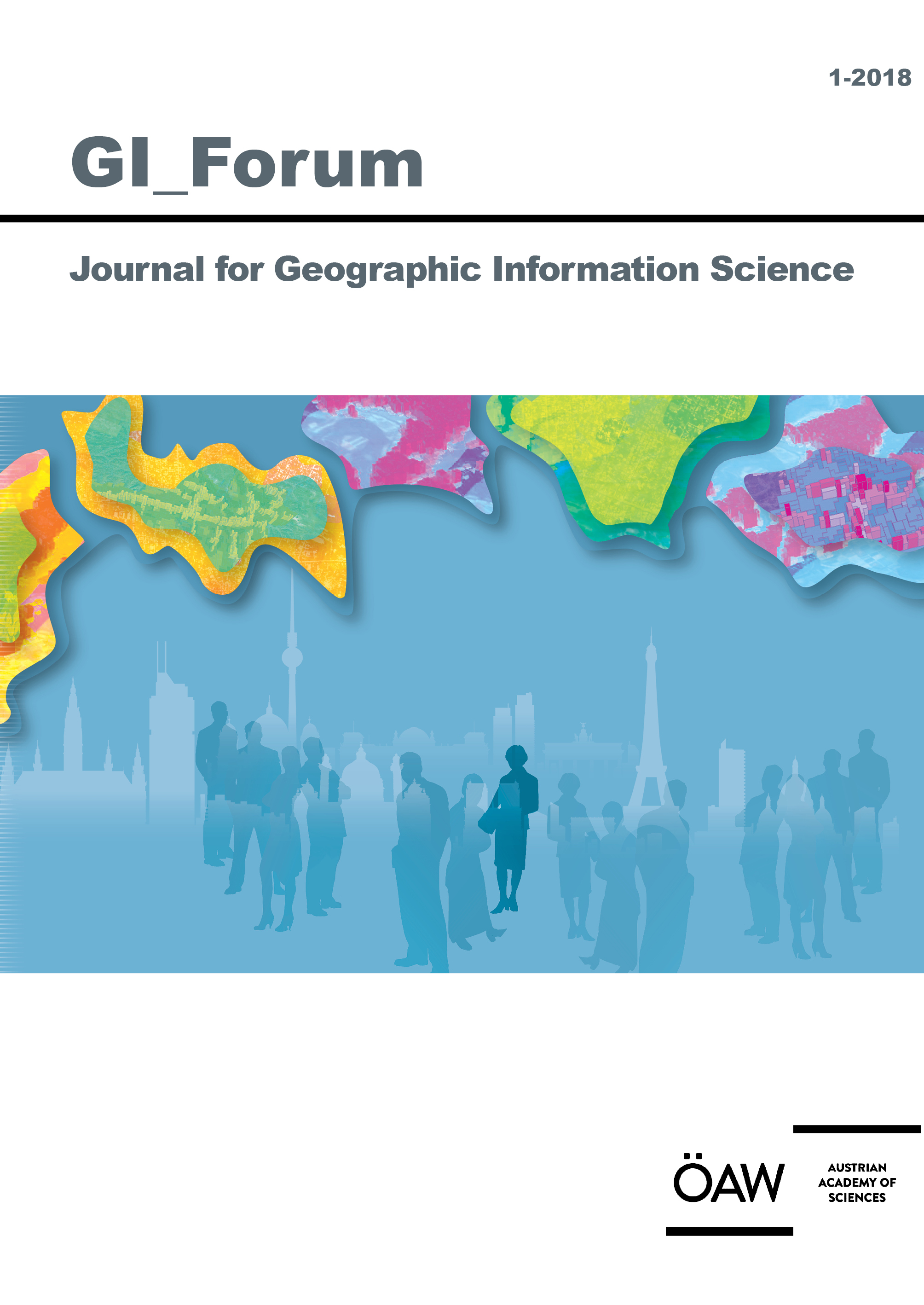Adrijana Car – Thomas Jekel – Josef Strobl – Gerald Griesebner (Eds.)
GI_Forum 2018, Volume 6, Issue 1
Journal for Geographic Information Science
Dariia Strelnikova,
Thomas Schneider,
Michael Leitner
S. 34 - 46
doi:
10.1553/giscience2018_01_s34
Verlag der Österreichischen Akademie der Wissenschaften
doi:
10.1553/giscience2018_01_s34
Abstract:
Spatial video technology allows the acquisition of video data that includes information about the geographical location of each recorded frame. Such data are captured mostly for entertainment or as part of various sports activities. However, due to the potential of spatial video data to be used for location-based purposes, such as disaster and health management, spatial video technology has been receiving more attention from the scientific community. This paper discusses the capabilities of spatial video technology to serve as a data acquisition tool in an urban environment, using the example of roadside advertising analysis in the city of Villach, Austria. The study shows that the application of spatial video technology helps to reduce the data acquisition time and uncovers further advantages, but also some limitations of this method. The data acquired are used to reveal patterns of spatial distribution of roadside advertisements. These can be used to analyse the effects of advertising in the urban environment, such as distracting road users.
spatial video technology, roadside advertising, distractions in urban traffic
Published Online:
2018/07/02 07:33:10
Document Date:
2018/06/22 07:32:00
Object Identifier:
0xc1aa5576 0x00390cc0
Rights:https://creativecommons.org/licenses/by-nd/4.0/
GI_Forum publishes high quality original research across the transdisciplinary field of Geographic Information Science (GIScience). The journal provides a platform for dialogue among GI-Scientists and educators, technologists and critical thinkers in an ongoing effort to advance the field and ultimately contribute to the creation of an informed GISociety. Submissions concentrate on innovation in education, science, methodology and technologies in the spatial domain and their role towards a more just, ethical and sustainable science and society. GI_Forum implements the policy of open access publication after a double-blind peer review process through a highly international team of seasoned scientists for quality assurance. Special emphasis is put on actively supporting young scientists through formative reviews of their submissions. Only English language contributions are published.
Starting 2016, GI_Forum publishes two issues a Year.
Joumal Information is available at: GI-Forum
GI_Forum is listed on the Directory of Open Access Journals (DOAJ)




 Home
Home Print
Print
 References
References
 Share
Share
